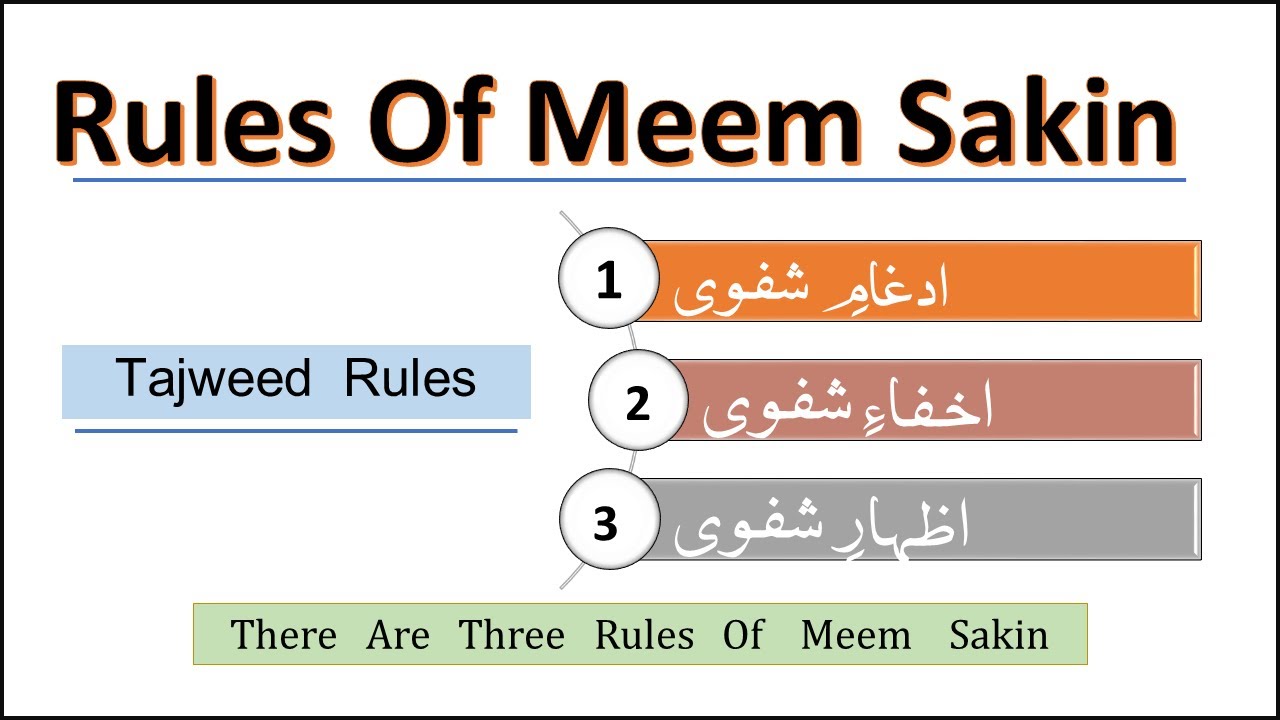🌟 What is Idh-haar Shafawi?
Introduction :
Idh-haar Shafawi refers to the clear and complete pronunciation of the letter Meem (م) with sukoon (ْ) when it is followed by any letter of the Arabic alphabet except Meem (م) or Ba (ب). The word “Idh-haar” means “to make something clear or visible” — and in Tajweed, it emphasizes clarity, precision, and respect for the sounds of the Quran.
When this rule is applied, you must not hide or merge the sound of the Meem. Instead, pronounce it clearly from the lips, making sure it retains its full, natural sound without elongation, merging, or nasalization (ghunnah).
When Does Idh-haar Shafawi Occur?
It occurs in the following condition:
-
When you see Meem with sukoon (ْ) in the Quran
-
Followed by any letter other than Meem (م) or Ba (ب)
For example:
-
فهمتم قوله
-
أنعمت عليهم
-
ويمشي في السوق
In these examples, the Meem must be pronounced clearly and independently without any blending with the following letter.
🔊 How to Pronounce Idh-haar Shafawi
-
Bring your lips together to pronounce the Meem with sukoon.
-
Immediately release them to say the next letter clearly.
-
Avoid any nasal sound unless the next letter requires it.
-
Do not elongate the Meem sound or make it sound like a hidden echo.
This technique ensures each letter keeps its identity, which is one of the key goals of Tajweed — giving every letter its right (حقّه) and its due (مستحقّه).
🎯 Why Is Idh-haar Shafawi Important?
-
Preserves the meaning of Quranic words.
-
Avoids confusion between similar rules like Ikhfaa Shafawi or Idghaam Shafawi.
-
Encourages mindful and respectful recitation.
-
Trains your articulation to become more accurate and disciplined.
Unlike Ikhfaa or Idghaam, Idh-haar Shafawi focuses on separating the sounds — not blending or hiding — which makes the recitation clear and strong. It also strengthens your ability to spot patterns in Quranic script, helping with memorization and fluency.
📘 Examples from the Quran
-
أنعمت عليهم (Surah Al-Fatiha): The Meem in “عليهم” is followed by the letter ‘Ayn, so it’s pronounced clearly.
-
يمشون في الأسواق (Surah Ya-Sin): The Meem in “يمشون” is followed by Sheen, so it’s also pronounced with full clarity.
-
فيهم من (Surah Al-Baqarah): The first Meem has sukoon and is followed by Meem, so this would actually be Idghaam, not Idh-haar — this is how you differentiate.
📌 Common Mistakes to Avoid
-
Merging the Meem slightly with the next letter.
-
Adding ghunnah (nasalization) when it’s not required.
-
Rushing through the Meem so it becomes unclear or silent.
-
Over-pronouncing and turning the sound into something exaggerated or unnatural.
💡 Pro Tip for Learners
To improve your Idh-haar Shafawi, try this:
-
Recite slowly and focus on each Meem with sukoon.
-
Use Surah Al-Fatiha, Al-Fil, or Al-Bayyinah for practice.
-
Record yourself and compare with professional reciters.
-
Practice with a mirror to observe lip movement — this helps you avoid accidental merging.
✅ Learning Summary
-
Idh-haar Shafawi happens when a Meem with sukoon is followed by any letter except Meem or Ba.
-
The Meem must be pronounced clearly, without hiding, merging, or nasalization.
-
It is a core rule that improves clarity and purity in recitation.
-
Daily practice, self-checking, and focused listening are the keys to mastering it.
📚 Join QuranRecers – Learn Tajweed the Easy Way!
At QuranRecers, we guide you through rules like Idh-haar Shafawi with human-style teaching, real Quran examples, and step-by-step breakdowns. Whether you’re a beginner or advanced, our lessons will help you recite beautifully — just like the Prophet Muhammad ﷺ did.
✨ Your Quran deserves clarity. Let’s master every sound, one letter at a time.
👉 Join us today and recite with confidence and excellence!













